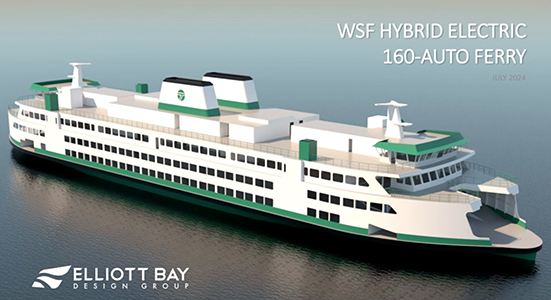— from Tom Owens —
OPALCO is about ready to launch its Community Solar Project. If you want to go solar, this may be a GOOD opportunity. The Project is GREAT for the environment, reducing CO2 emissions. However, all OPALCO’s electric customers are going to see an increase in rates to cover increased purchase power costs caused by this project.
You can read all about The Community Solar Project in OPALCO promotion articles. Briefly, it is going to be a large solar array that OPALCO will own built on Decatur Island. OPALCO will sell 6720 subscription units (term 20 years) for 90% of the solar energy produced to interested buyers (subscribers). The remaining 10% of solar energy will go to help fund OPALCO’s Energy Assistance Charge to assist low income members. One subscription unit of 75 watts of capacity will cost you $150. OPALCO will buy the subscribers’ solar energy (570,000 kwhr/year, declining about 0.5%/yr.) at an initial price equal to OPALCO’s variable rate ($0.1007/kwhr). This price can be changed by the Board, which would impact subscriber economics. The project has an all-inclusive capital, operating, and maintenance cost of the project ($1,008,000) which will be offset in full by the subscription sales ($1,008,000), so OPALCO should not be out any cash for this project.
Going solar will never be easier! Using numbers provided by OPALCO (unverified) and projecting over the 20 year term and making some gross assumptions, subscribers (as a whole) will break even in about 10 years. Overall subscribers come out ahead with a net gain of $320,000 (2018 $’s) (revenue stream of $1.324MM less $1.008MM invested). You will be taking advantage of Washington State’s generous solar production incentive payments while they last. The Community Solar Project is cheaper (up to about 5kw and then it is very close to even) than paying to install a solar system on your home. OPALCO, instead of you, will be doing all the maintenance on the Community Solar Project making it an even better alternative. So you will not be falling off your roof while cleaning your panels.
There are some downsides for subscribers to the Community Solar Project. Your revenue stream depends on the OPALCO Board’s decisions on the price they will pay you for your solar output in the future. It may stay the same, go up, or go down. After 20 years, your subscription expires and you are back to straight OPALCO power. Since the solar system is on Decatur, you will not have the ability to power your house with energy from the Community Solar Project during OPALCO outages.
The Community Solar Project WILL reducing CO2 emissions by using solar energy vs OPALCO energy (even though OPALCO claims to have only “clean” energy). Each year, the Community Solar Project’s output will reduce the energy OPALCO must buy from BPA. BPA will in turn sell this energy to other utilities that have more expensive thermal electric production. In turn, these utilities will decrease production from their most expensive generation, their coal fired electric generation. This reduction in coal combustion will reduce CO2 emissions up to 23,600,000 lbs. over the 20 year term of the Community Solar Project.
On the other hand, OPALCO’s electric customers will pay about $570,000 (2018 $’s) more, over the 20 year term, to offset increased power purchase costs. OPALCO proposes to purchase subscribers’ solar energy at $0.1007/kwhr and will sell it to us customers at the same $0.1007/kwhr rate. No “profit” will be realized by OPALCO to cover other operating costs. Without the Community Solar Project, OPALCO would be buying energy from Bonneville Power Agency (BPA) at $0.0422/kwhr and sell it to us customers at $0.1007/kwhr. OPALCO was making a “profit” of about $0.058/kwhr (the difference between the solar energy price and the BPA price). The Community Solar Project costs OPALCO that “profit” and we electric customers are going to have to pay the extra $570,000 in increased power costs.
OPALCO will see a number of advantages offsetting some portion of the increased power costs. OPALCO’s greatest future risk (in my view) is BPA’s undersea transmission cable from Fidalgo Island to Decatur/Lopez Islands. If this fails, we are going to be without electricity for a very long time. So any local generation, however small and intermittent, the Community Solar Project (0.3% of average load) for example, is a start. Some additional control will be possible over BPA’s demand and transmission charges. The Community Solar Project output reverts back to OPALCO (thereafter benefiting all customers) after 20 years. The low income subsidy program may see a $50,000 gain (over the 20 year term) from solar project’s output retained by OPALCO.
So, on balance, if you want to go solar and have the funds, this may be just the thing for you. If you want to reduce CO2 emissions, consider subscribing. If you are going to be around for another 20 years, this could be just your cup of tea to do your part in solving some of our energy and emission problems.
This article is based on some gross assumption. The numbers should be in the ballpark. OPALCO provided numbers and information used in this article last week. Some information has changed since then. I have not been given information to verify OPALCO’s data. OPALCO has had the opportunity to review the preliminary conclusions. The system works as designed and costs are within budget. OPALCO maintains the system to preserve output (given a 0.5% degradation rate) over time. OPALCO’s Board keeps the purchase price at the same rate above other power purchase options.
**If you are reading theOrcasonian for free, thank your fellow islanders. If you would like to support theOrcasonian CLICK HERE to set your modestly-priced, voluntary subscription. Otherwise, no worries; we’re happy to share with you.**







